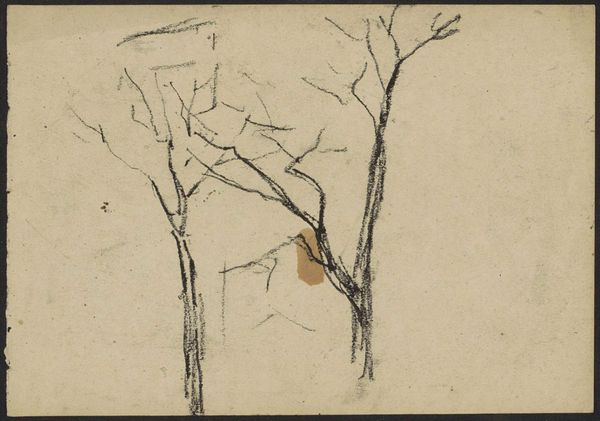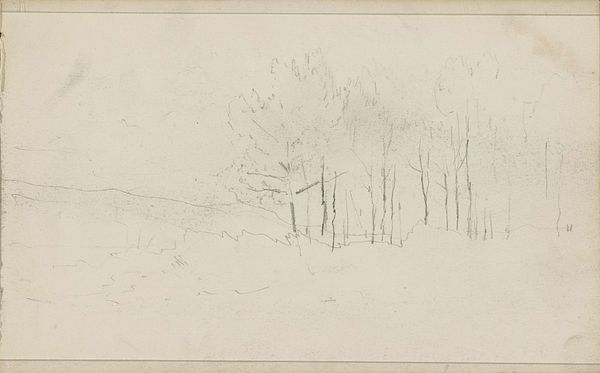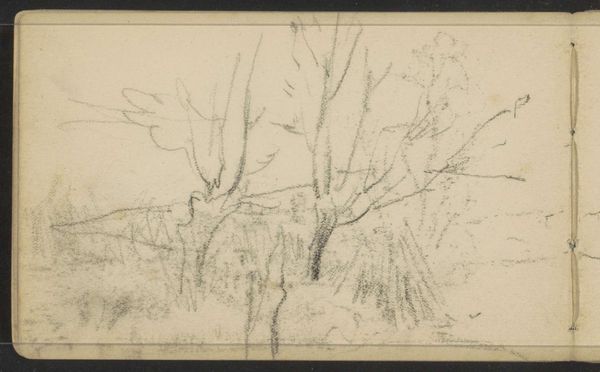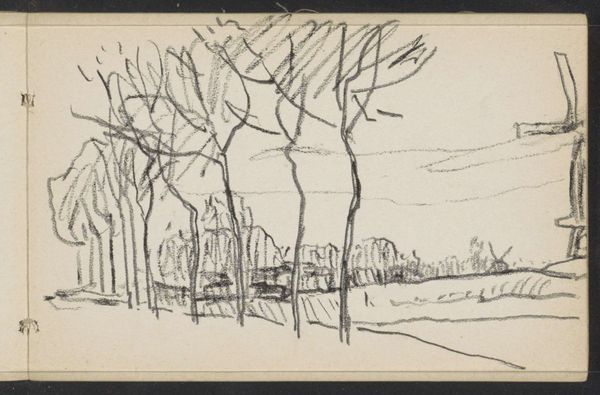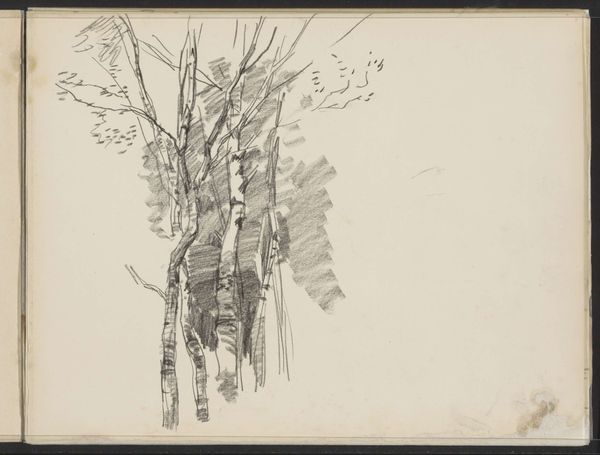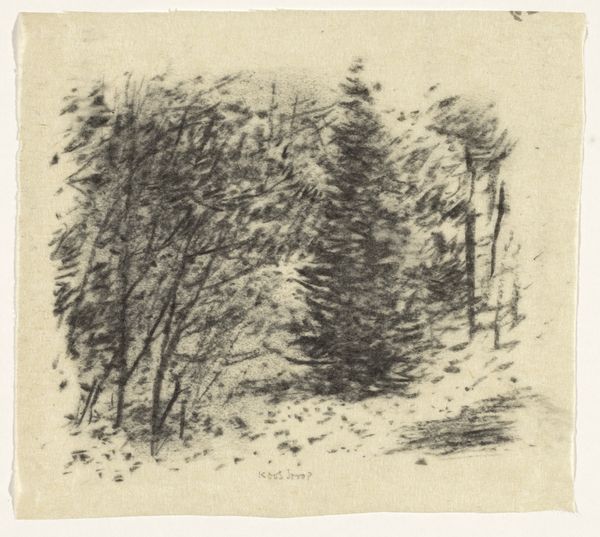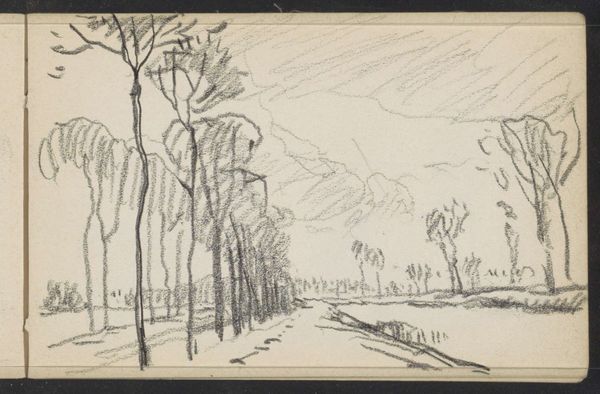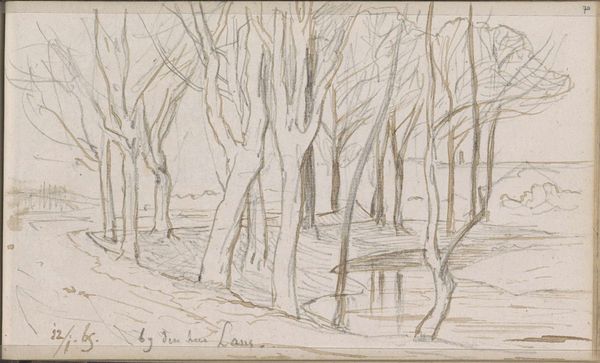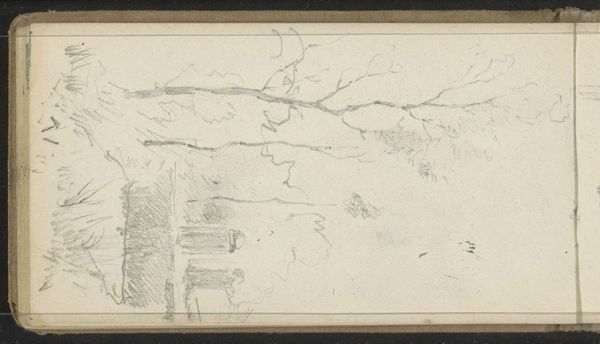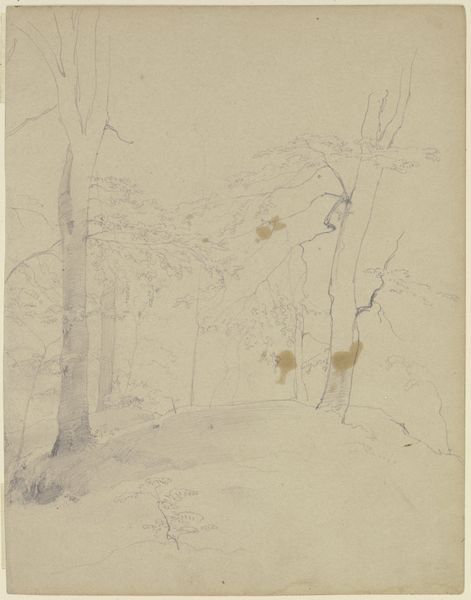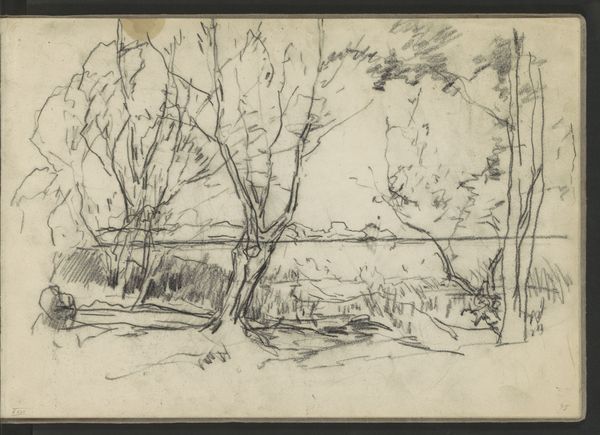
drawing, paper, ink
#
tree
#
drawing
#
ink painting
#
landscape
#
figuration
#
paper
#
ink
#
line
Dimensions: height 140 mm, width 200 mm
Copyright: Rijks Museum: Open Domain
Editor: This is "Bomenrij," a drawing in ink on paper by Willem Witsen, dating from around 1870 to 1923. The starkness of the trees against that sketchy background creates such a melancholic atmosphere. What do you see in this piece, beyond just a row of trees? Curator: For me, it speaks volumes about humanity's relationship with nature, especially during a time of rapid industrialization. These trees, rendered in such a raw, almost desperate way, could be seen as a metaphor for the pre-industrial world, struggling to survive amidst the rise of factories and urban sprawl. Does the composition evoke any specific power dynamics to you? Editor: Hmm, I hadn't thought about it that way. Now that you mention it, the way the trees are almost huddled together, and the sketchy lines above them – they seem vulnerable. The background almost feels threatening. Curator: Exactly! Think about the social context of the late 19th century. Urbanization led to displacement, alienation, and a yearning for a lost connection with the natural world. Witsen, part of the Amsterdam Impressionism movement, was acutely aware of these shifts. What do you make of his choice to use such minimal materials—just ink and paper? Editor: It amplifies the sense of fragility, doesn’t it? An elaborate oil painting might have felt too grand, too detached. Ink on paper brings a sense of immediacy and directness, almost like a cry for help. It makes me think about environmentalism today, and how artists continue to use simple means to deliver powerful messages about the climate crisis. Curator: Precisely. Witsen’s work serves as a poignant reminder that the anxieties we face today regarding our environment and place in the world are not new. It underlines the ongoing dialogue between art, history, and the critical need for social and environmental justice. Editor: This has really opened my eyes. I appreciate how the piece operates on a level deeper than just depicting landscape. Curator: And I believe your interpretation perfectly captures the work’s essence; it becomes so much more profound when viewed through a contemporary lens of environmental awareness and social concern.
Comments
No comments
Be the first to comment and join the conversation on the ultimate creative platform.
